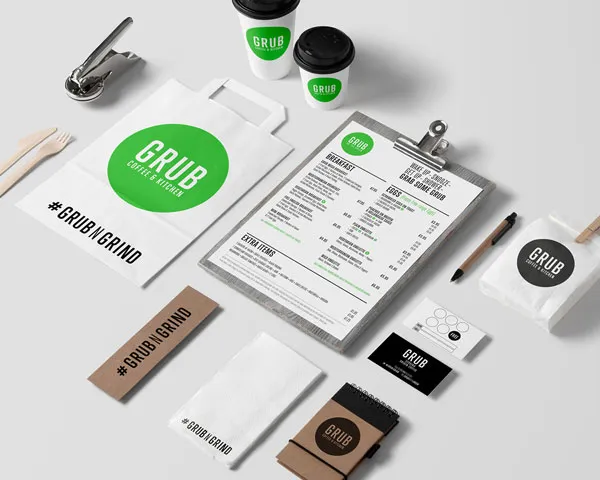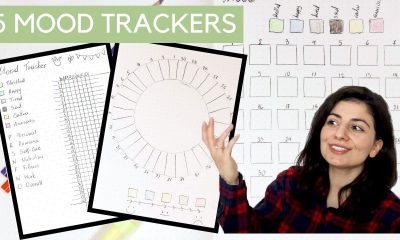Marketing
The Power of Print Marketing: Why Print Marketing Still Matters in a Digital World

As online advertising and social media campaigns increasingly dominate the marketing landscape, it can be easy to overlook the power of print marketing. Yet for businesses of all sizes and industries alike, employing effective print marketing strategies can be transformative. In this article, we’ll delve into this space, discover its benefits, and discuss effective methods to capitalize on its potential.
Introduction
Print marketing may seem outdated in today’s digitally driven landscape, yet its unique advantages remain undiminished. Print materials like postcards, brochures, flyers, posters, and banners offer distinct advantages that digital channels cannot usually match.
Print materials offer a tangible experience that digital ads simply cannot rival. Holding a beautifully designed brochure or receiving a customized postcard creates a tangible bond that resonates with audiences more strongly than digital advertisements can ever hope to.
Print marketing provides a refreshing break from screens, allowing individuals to take in information at their own pace and engage with it at their own pace. From paging through brochures to gazing upon striking posters, print materials provide an immersive sensory-rich experience that complements digital strategies. As we explore print marketing further, we will uncover its key components, how seamlessly it integrates with digital efforts, and why this tool remains essential for businesses looking to engage their target audiences and build stronger connections.
Benefits of Print Marketing
Here are some benefits of print marketing
Tangible and Physical Presence
Print marketing stands out as one of the few forms of promotion with tangible results, like receiving postcards in the mail or holding brochures in your hands – they create an experience you won’t soon forget, creating an authenticity digital ads cannot match.
Targeted Marketing
Print marketing allows for precise targeting. Businesses can tailor their print materials to specific demographics or locations to ensure that their message reaches its intended recipient – for instance, a local restaurant could distribute flyers in its neighborhood to draw new customers in.
Brand Recognition
A consistent brand presence across printed materials can greatly strengthen brand recognition among your audience. Familiar logos, color schemes and fonts help establish trust with consumers who see your logo both online and off. When customers encounter your brand both ways it strengthens its overall image.
Building Trust and Credibility
Print materials have the ability to foster both trust and credibility among their recipients. Customers may perceive printed marketing collateral as more reliable and trustworthy compared with digital ads which may be easily overlooked or dismissed, which can be especially invaluable in industries like finance, healthcare, and legal services.
Key Components of Print Marketing
In order to produce effective print marketing materials, it is necessary to understand the key elements that contribute to successful campaigns.
Postcards, Brochures, and Flyers
Print marketing tools such as postcards, brochures, and flyers offer immense versatility when used properly. Postcards provide quick attention-getting messages while brochures allow for in-depth information sharing – and flyers provide great promotional opportunities such as events or special offers. When it comes to designing these print materials, MyCreativeShop offers a range of templates and customization options that can transform a simple postcard or brochure into a memorable marketing piece. With their user-friendly platform, you can create a customized postcard that captures your brand’s essence and effectively communicates your message. This level of customization ensures that your print materials not only engage but also leave a lasting impression on your target audience.
Design and Visual Appeal
Striking and visually attractive design can make all the difference when it comes to getting print material noticed by readers. Here’s how to master this essential element:
- Eye-Catching Graphics: Use eye-catching graphics that align with the message of your brand to attract potential clients to it quickly. High-quality visuals will instantly grab their attention.
- Color Harmony: Select a palette that not only represents your brand but also stirs the desired emotions. Different hues convey different messages; select them carefully when making this decision.
- Pay Attention to Typography: Be mindful when it comes to typography, using fonts that are easy on the eyes while reflecting your brand’s essence. Introducing various font styles can add depth to your designs when done deliberately.
- Whitespace Don’t crowd your design too tightly – leave enough whitespace so that your message won’t become lost in a sea of clutter while making content easier to digest.
- Consistency: Establish a consistent design across your print materials, to enhance brand recognition and ensure a unified appearance and feel.
Content Is King
At the core of any print marketing material is compelling content. Here’s how to develop meaningful material for your audience:
- Clarity and Conciseness: Keep your message clear and succinct, without using too much technical jargon, to ensure even those unfamiliar with your industry can comprehend.
- Benefits Over Features: When selling products or services, emphasize their benefits rather than listing features. Focus on how your offering solves problems or meets needs.
- Craft Engaging Headlines: Craft headlines that engage readers, encouraging them to explore further. A well-crafted headline can make all the difference!
- Storytelling: Engage with your audience emotionally by weaving stories or anecdotes that resonate. People remember narratives more readily than facts and figures.
- Call to Action: Every piece of print marketing must include an actionable call-to-action that encourages readers to take the next steps – whether that means purchasing, visiting your website, or reaching out – and direct them on how best to take the next steps.
Effective Printing and Distribution
Successful printing and strategic distribution are integral parts of creating print marketing materials but don’t end with just design and content alone.
- Selecting a Reputable Printer: For optimal results, work with a reliable printing service to obtain high-quality materials. Discuss your requirements, paper options, and desired finishing touches before settling on one.
- Distribution Channels: When choosing distribution channels, consider what will best reach your target audience. Do you plan to mail postcards, distribute flyers in stores, or hand out brochures at events?
- Timing: Take into account when and how your distribution will occur; for instance, sending holiday-themed postcards during their appropriate season could prove more successful.
- Tracking and Analytics: Implement tracking mechanisms such as unique phone numbers or website URLs in order to evaluate the success of your distribution channels.
- Receive Feedback: Encourage recipients to provide their opinions on your materials so you can improve future print marketing campaigns. This feedback loop can provide invaluable assistance.
Implementing these key elements into your print marketing strategy can greatly increase its success. Remember that print marketing is a dynamic field; staying current on design trends, content preferences and distribution methods is important for elevating campaigns in this ever-evolving landscape of marketing.
Our Final Thoughts
Print marketing remains relevant in an ever-evolving digital environment, thanks to its tactile experience of holding physical marketing pieces that still engage and hold audiences’ interest. From quick postcard messages to detailed information brochures, print materials offer versatility and effectiveness that makes an impactful statement about a brand or company.
Effective print marketing entails four essential elements: captivating design, engaging content, meticulous printing and strategic distribution. Together these components transform printed materials into powerful communication tools.
Print marketing and digital marketing work together seamlessly to provide customers with an unforgettable customer experience. When you incorporate print materials into your overall marketing plan, you harness their lasting effect while simultaneously navigating a constantly shifting digital environment – and you show that print remains powerful even today in our increasingly digital world.





















































